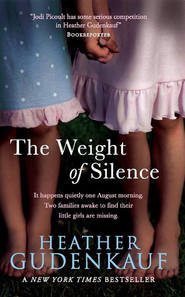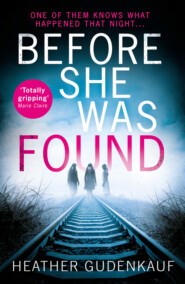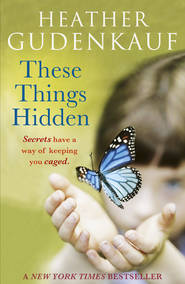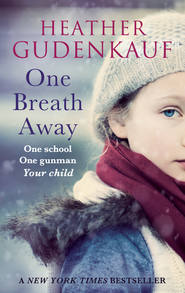По всем вопросам обращайтесь на: info@litportal.ru
(©) 2003-2025.
✖
Little Mercies
Автор
Год написания книги
2018
Настройки чтения
Размер шрифта
Высота строк
Поля
Chapter 4 (#u543234cf-fd52-53cb-b212-4cadea68f819)
Chapter 5 (#ue1e59b47-2f86-5211-90c4-626a4391aa9d)
Chapter 6 (#u1a3145ea-cc35-5180-95c9-bc4387be1cf7)
Chapter 7 (#u8f656ec8-f143-5737-850f-a0e12da93c12)
Chapter 8 (#ua9cdfb42-b63a-5cf7-924e-d851cdc17860)
Chapter 9 (#ue641b7fc-ef5b-57c3-b714-bc28b6ee5f34)
Chapter 10 (#ufb2534d0-b618-5e96-9958-e18a31b64f5e)
Chapter 11 (#litres_trial_promo)
Chapter 12 (#litres_trial_promo)
Chapter 13 (#litres_trial_promo)
Chapter 14 (#litres_trial_promo)
Chapter 15 (#litres_trial_promo)
Chapter 16 (#litres_trial_promo)
Chapter 17 (#litres_trial_promo)
Chapter 18 (#litres_trial_promo)
Chapter 19 (#litres_trial_promo)
Chapter 20 (#litres_trial_promo)
Chapter 21 (#litres_trial_promo)
Chapter 22 (#litres_trial_promo)
Chapter 23 (#litres_trial_promo)
Chapter 24 (#litres_trial_promo)
Chapter 25 (#litres_trial_promo)
Chapter 26 (#litres_trial_promo)
Chapter 27 (#litres_trial_promo)
Chapter 28 (#litres_trial_promo)
Chapter 29 (#litres_trial_promo)
Chapter 30 (#litres_trial_promo)
Chapter 31 (#litres_trial_promo)
Chapter 32 (#litres_trial_promo)
Chapter 33 (#litres_trial_promo)
Chapter 34 (#litres_trial_promo)
Chapter 35 (#litres_trial_promo)
Chapter 36 (#litres_trial_promo)
Chapter 37 (#litres_trial_promo)
Chapter 38 (#litres_trial_promo)
Chapter 39 (#litres_trial_promo)
Chapter 40 (#litres_trial_promo)
Chapter 41 (#litres_trial_promo)
Epilogue (#litres_trial_promo)
Acknowledgments (#litres_trial_promo)
Endpages (#litres_trial_promo)
Copyright (#litres_trial_promo)
Chapter 1 (#ulink_f96df083-0f9c-5782-a846-18454e876a61)
When people find out what I do for a living their first question is always about the most horrendous case of child abuse I’ve encountered. I can be at a backyard barbecue or at a New Year’s Eve party or in the waiting room at the dentist’s office, or my husband’s baseball game. You must see so much, they say, shaking their heads, lips pursed in something like empathy, like I was the one who might have endured the beatings, the burns, the torrents of hateful words. Of course I don’t share any details about my clients and their families. So much has been stripped from the children that stagger in and out of my orbit; the very least I can do is honor their privacy. Come on, people urge, tell me. It’s bad, isn’t it? Like I’m dangling some salacious gossip in front of them. Like I’m keeping mum because I don’t want to offend their tender ears, upset their perfectly ordered worlds where all children are touched with gentle hands, spoken to with loving words and tucked warmly into beds with full stomachs.
Close your eyes, I once told the shortstop’s mother and she did, almost quivering in anticipation of the gory details. She nodded in compliance, cocking her head in my direction, preparing for what I will reveal next. Will I tell her about Mariah Crane, the seven-year-old whose mother held her head under water until there was no chance that her damaged brain could ever catch up with her growing body? Or will I tell them about the twins? Everyone has heard about the Twin Case, as it’s still known. Everyone wants to know more about the twins.
Now imagine the vilest things that can be done to a human being, I say. I let her think about this for a moment and I can see the slight spasm of revulsion skitter across her face. That’s what I’ve seen. She opens one eye to see if I’ll say anything else. But that’s all I have for her.
The only people I talk to about the Twin Case are my husband and Joe Gaddey. I was a newly minted social worker, just out of graduate school when I moved back to my hometown of Cedar City, the second largest city in Iowa, just behind Des Moines with a population of about one hundred ninety-five thousand. My husband moved to Cedar City to teach high school history and coach baseball, having grown up in the tiny town of Broken Branch, Iowa, where everyone is related, if not by blood then by marriage. We met through mutual friends and eventually settled into married life, ready to change the world. In the end I have struggled to not let the case change me.
Adam and I hadn’t even met yet when I was assigned my first social work case involving a set of six-year-old twin boys, a five-year-old girl, their mother, their father and a baseball bat. Only one of the boys survived. The family wasn’t new to the system; I had inherited the case from my predecessor and arrived for the first of my scheduled visits just as the emergency personnel were bringing out the first stretcher. Joe Gaddey was the officer positioned outside the front door. In a daze I moved toward him.
“And you are?” he asked. I couldn’t even speak, could only look up at him. I peeked around his solid girth, trying to peer into the house and was greeted with a terrible sight. I teetered on my high heels and grabbed on to his sleeve for support. “Whoa, now,” he said, steadying me. “You don’t want to see that.”
“I’m their social worker,” I said in a small voice. “What happened?”











